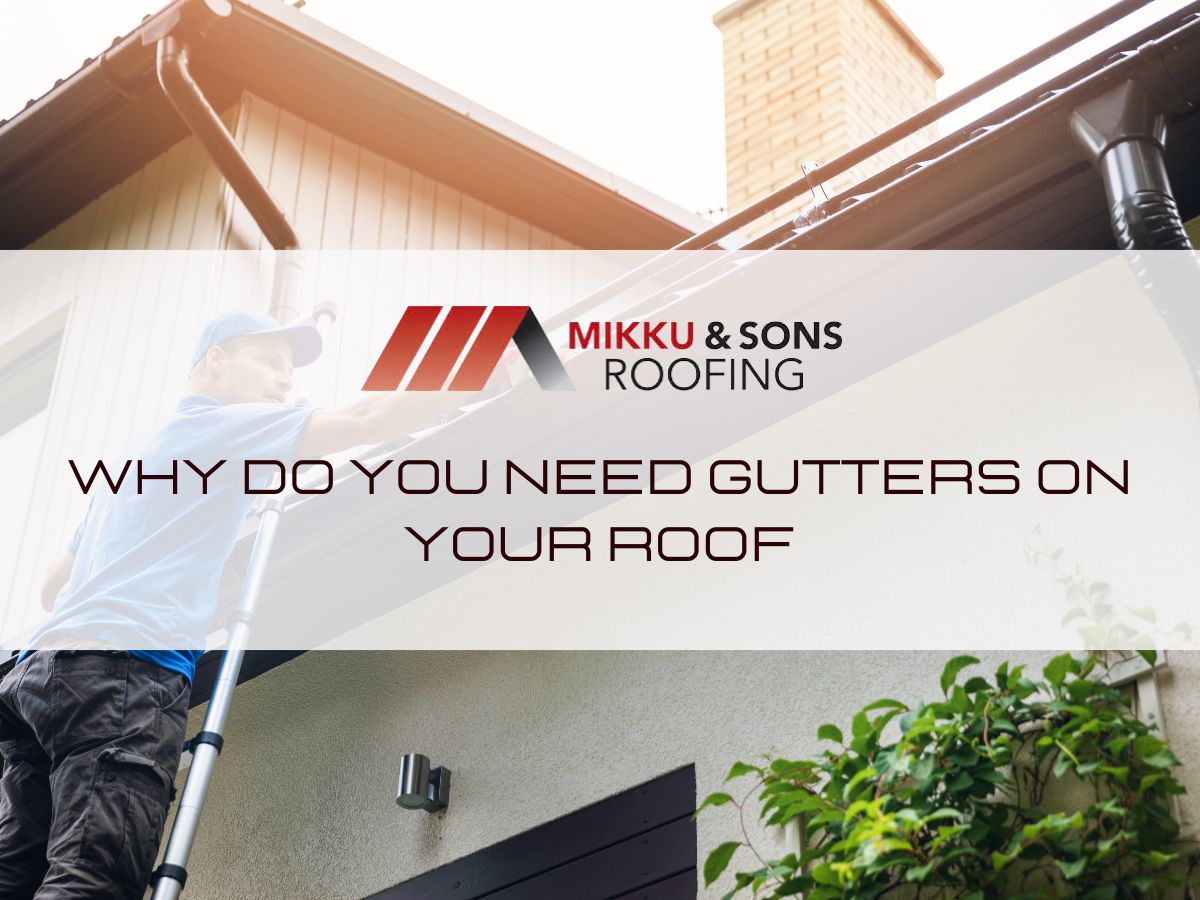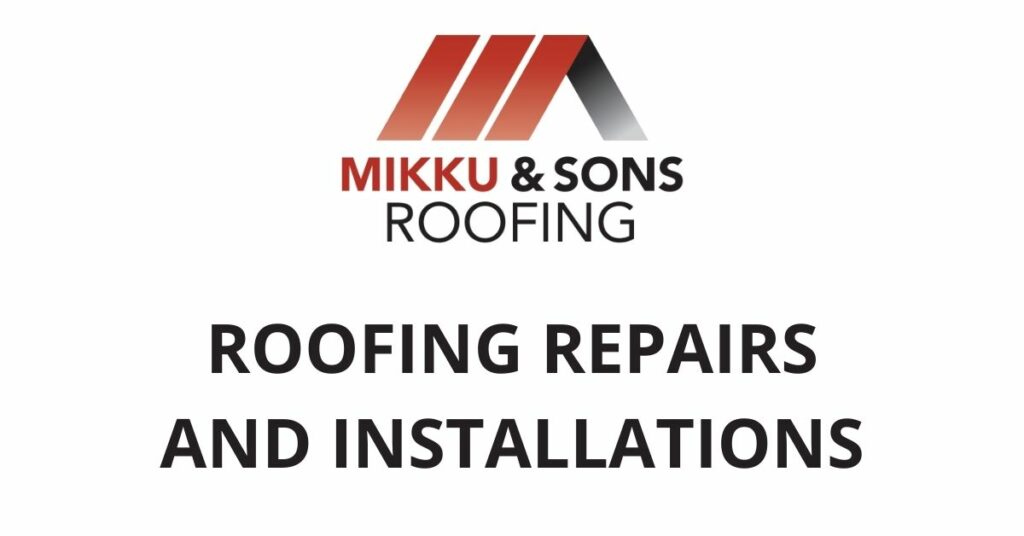

On a house, a roof valley is an area where two sloped roofs meet. Stormwater will begin to flow into your custom gutter and downspout system at this point. When installing a shingle roof, the manner the valley is built is quite important.
Incorrectly placed and flashed valleys may lead to substantial leakage issues. In spite of being a roofing penetration, valleys must be flashed and watertight.
This article will explain why a valley has to have flashing placed by a roofing contractor over the whole length of its sloping roof line. To answer the question, 'what is a roof valley?' we'll go into more detail about this issue below so that you can see why roof valleys leak and become such a nuisance.

Open Valleys
The roof-covering material terminates a few inches short of the roof valley's midline. Water cannot get into the roof valley because of the metal coating.
If the roll-roofing valley liners fail, or if there is a cross wash, where water flowing down a roof slope rushes across the valley and up under the shingles on the next slope, you may have faulty valley lined shingles installed. Prevent valley issues by having your roofing system installed properly.
Closed Valleys
When shingles on one or both sides of the roof reach over the valley on the neighboring roof slope, your roofing system has a closed valley. Shingles shield the inside linings of a closed valley from exposure to the elements and damage.
A cut valley is a form of a closed valley in which the shingles from the surrounding slope are cut parallel and just short of the valley's center. Roof replacement is unnecessary if you don't observe any leaks in the valleys because of poor installation quality; not a problem.
Woven Valleys
In a closed valley, shingles from both sides of the roof are alternately routed through the next slope. It should be installed by your roofers in such a way that runoff cannot penetrate the shingles.
Flashing a valley on a roof is the same regardless of the material:
The occurrence of roof leaks in a variety of locations is not uncommon. When it comes to water seeping into homes, we get a lot of calls from people living in valleys. In most cases, the leak is the result of badly fitted or nonexistent flashing in the valley region.
Inexperienced roofers or general contractors are frequently the culprits of this subpar job. A professional roofing contractor should be hired to prevent any leaks from occurring in the first place. Valley flashing is the most efficient method of repairing a leaky valley.
Because these roof repair businesses don't know the basics, a large number of valleys are not flashed or are flashed incorrectly. Even if the contractor knows what he's doing, he may have chosen to take shortcuts at the expense of the homeowner. It doesn't matter what went wrong; if a valley is left exposed, your house is in danger of harm.
It's not difficult to get proper valley flashing. Professional roofers will have little trouble installing a dependable valley flashing system. This type of flashing is easy to grasp. Before the final roofing material is laid, this piece of metal is put in place.
For the full length of the valley, it follows the contours exactly. Stormwater will have a clear course to follow as it flows from your roof to your gutters and downspouts. In most cases, a GC will use a valley to weave the shingles together.
This is just the opposite of what the shingle industry advises against doing. It's time for a change of scenery, perhaps on a steeper slope. However, with a gradual slope, water will have more time to soak into the roof, allowing it to penetrate further.

Roofers and general contractors who are untrained are the first things to go wrong. They have a bad reputation among contractors for cutting corners and not finishing the task to the highest standard. An important part of keeping a home dry is installing roof flashings.
To ensure the integrity of their job, a skilled roofing contractor will properly flash any vulnerable spots around the property. Particularly when it comes to the long term, Valleys account for the vast majority of all roof leaks because of faulty or nonexistent flashing.
A typical error is to weave the tiles in the valley together. An easy-to-use approach that can save money and time for general contractors is available. Creating a finished product that looks nice to the untrained eye of a homeowner.
Woven Valley Shingle Installation
Installing braided valleys involves laying shingles in the valley and tying them together.
A braided valley gives a constant aesthetic to certain homes. There may be lumps and imperfections in the finished roof as a result of improperly put down shingle placement in the valley, resulting in an unflattering appearance.
Rather than using roofing cement, the woven valley shingle installation method relies on the weaving pattern to keep water out. This means that you should not nail any closer than six inches from the valley's center while placing shingles in a woven valley. Under the shingles, a hollow area can form if this step is not performed correctly.
This "bridging" is a severe issue for the roof's longevity. As a result of the open area, the shingles are more susceptible to damage from things like footfall, hail, or other flying debris. Because of this, certain manufacturers' warranties may be voided if their shingles are installed in a weaving valley.
Other disadvantages of a braided valley shingle installation are their delayed installation, especially in cold weather, and their more complex maintenance. Because this type of roof valley can only be shingled by simultaneously installing both roof faces, the process takes a long time.
The contractor must remove and reweave numerous shingles to replace a single one if repairs are required. While the initial installation costs of a woven valley may be lower because of the use of fewer materials, they may be more expensive in the long run.
Because of their single-layer design, woven valleys are ideal for use with three-tab shingles. To properly shingle a valley, you'll want to consider the increased thickness and decreased flexibility of architectural shingles.
In braided valleys, laminated shingles are more likely to cause bumps. Because of their bulkiness, they may not even be able to be weaved. As a result, we do not advocate the use of laminated shingles in a weaving valley.
Closed-Cut Shingle Valley Installation
Installing closed valleys, also known as closed valleys, is faster and cleaner than installing braided valleys. It appears as if the tiles meet neatly in the valley's middle when viewed from the ground. Underneath the uppermost shingle, a valley is formed.
A closed-cut valley is created when the initial roof plan's shingles are installed into the valley. This phase requires the use of just entire (not chopped) shingles.
Roofing shingles are installed on the second roof plane, and they are allowed to lap over the valleys of the previous roof. After that, the shingles on the second layer are chopped to create a straight line through the valley's middle. When cutting the shingles, use a chalk line as a guide.
A closed valley, in contrast to a braided valley, lacks hollows. Closed valleys, on the other hand, must rely on shingles to keep the valley protected, which has disadvantages.
As the roof ages, the valley shingles are more likely to lose their granules, and with them, their color and protective properties, than the rest of the roof is. Any type of shingle in a valley, as opposed to metal flashing in an open valley, might ultimately impede appropriate water and debris movement.
California Valley
The California valley, also known as the Long Island valley and New Jersey valley, is a variation of the closed-cut valley. When using this technique, it is necessary to put the last shingles on the "cut" side of a cut valley horizontally, causing them to flow up and down the valley.
This reduces time and is the fastest technique to shingle a roof valley, but in most regions, it does not give appropriate protection. Indeed, valleys in California are restricted in some places. Always check your local codes to determine if a certain type of valley installation is required.
Open Valley Shingle Installation
Metal flashing is the only defense an exposed valley has against the elements. Flashing is exposed on this roof, so the valleys are clearly evident. With copper or painted flashing, exposed valleys can enhance the roof's design, although some homeowners find them unappealing.
When it comes to snow, metal sheds it faster and more efficiently than shingles, making it less susceptible to ice dam and debris accumulation. The galvanized nature of the valley flashing metal ensures that it won't corrode or deteriorate in the presence of water.
Both an ice barrier and wind-driven rain will not be able to open the door. Open valleys may also be utilized to connect roofs with dramatically varied pitches, which is a boon to the roofing industry.
You'll need to decide on a flashing material if you're building an open valley. Flashing is usually made of metal. Among the possibilities:
As a minimum, we propose a 28-gauge galvanized metal in accordance with local building requirements. Corrosion resistance and non-staining are still required if a metal is not used. It must also be at least 24 inches (610 mm) broad to use valley flashing.
The thickness standards for flashing are commonly misunderstood, so be sure to check with your local building code. Valley flashing should be installed such that it matches or exceeds the life expectancy of the shingles.
You should also take into account the valley flashing profile when making a decision. Some flashing has a "W" curve in the middle, whereas another flashing is straight. Water cannot flow from one side to the other of the flashing because of a crimp in the middle of it. Using this method, you may connect two asymmetrically sized roof planes.
To sum everything up, a roof valley is the meeting point of two slopes of a roof at the lowest points. Two slopes of a roof can meet at the roof corners to make the roof hip.
A roof valley can either be open or closed depending on the design but proper flashing should be done at these points to ensure that there are no leaks.
Take a look at the flashing's aesthetics. To complement the shingle color, some homeowners like to paint the flashing. Others choose to keep the copper or steel face unchanged for a more dramatic effect. A home's exterior may be dramatically improved by the color and style of its shingles and flashing.
If you happen to notice leaks and you have these types of roof valleys, Mikku and Sons Roofing can work with you to correct the problem. Get in touch with us in Phoenix and in surrounding areas. Call us at (623) 465-1068.
